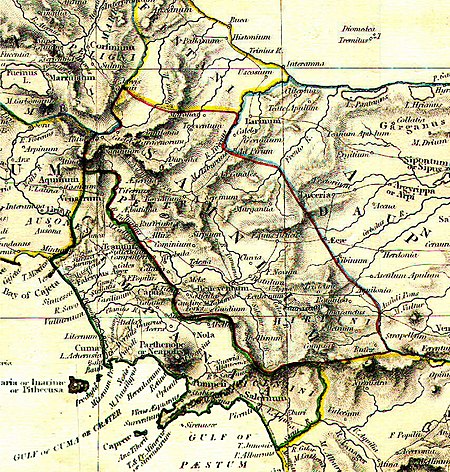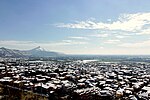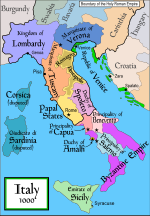Samnium

Samnium (Italian: Sannio) is a Latin exonym for a region of Southern Italy anciently inhabited by the Samnites. Their own endonyms were Safinim for the country (attested in one inscription and one coin legend) and Safineis for the people. The language of these endonyms and of the population was the Oscan language. However, not all the Samnites spoke Oscan, and not all the Oscan-speakers lived in Samnium. Ancient geographers were unable to relay a precise definition of Samnium's borders. Moreover, the areas it included vary depending on the time period considered. The main configurations are the borders it had during the floruit of the Oscan speakers, from about 600 BC to about 290 BC, when it was finally absorbed by the Roman Republic. The original territory of Samnium should not be confused with the later territory of the same name. Rome's first Emperor, Augustus, divided Italy into 11 regions. Although these entities only served administrative purposes, and were identified with the sole numeral, by scholarly convention the Regio IV has been dubbed "Samnium". Ancient Samnium had actually been divided into three of the Augustan regions.
Excerpt from the Wikipedia article Samnium (License: CC BY-SA 3.0, Authors, Images).Samnium
Karl-Liebknecht-Straße, Berlin Mitte
Geographical coordinates (GPS) Address Nearby Places Show on map
Geographical coordinates (GPS)
| Latitude | Longitude |
|---|---|
| N 41.169444444444 ° | E 14.236111111111 ° |
Address
Pressehaus
Karl-Liebknecht-Straße
10178 Berlin, Mitte
Berlin, Deutschland
Open on Google Maps







